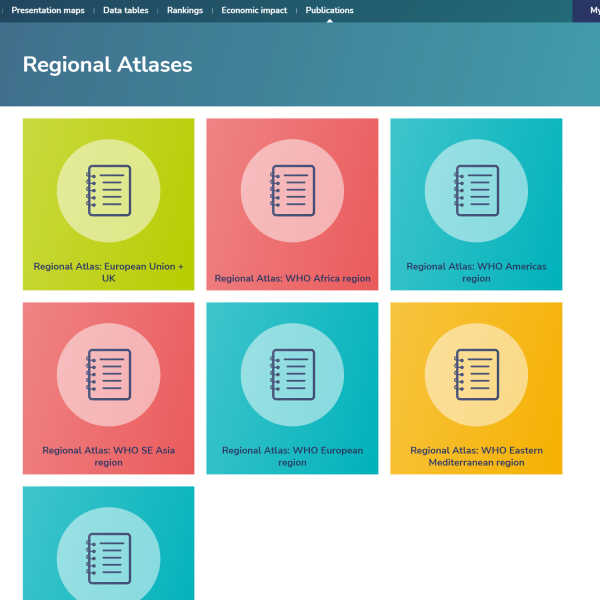2021 in review: Global Obesity Observatory
2021 has been a successful year for the Global Obesity Observatory, with significant website developments, data updates, and rising usage.
Our team are continuously updating the data available at the Observatory. In 2021 alone, we have added over 500 data updates for over 90 countries for general prevalence, by age, by sex, by region, by ethnicity, by education and by socio-economic status. Trend graphics were also updated and created and the large cross-national survey EUROSTAT data from 2019 was imported.
Throughout the year we have undertaken a steady social marketing campaign to promote the Observatory. As a result of this, our visitor numbers have more than doubled and we have had users from almost every country around the world.
"The Global Obesity Observatory is a fantastic resource. It is a treasure trove of information and a one-stop shop for the best and latest global obesity data." Professor Donna Ryan Pennington Biomedical Research Center
We have also expanded our presentation maps, where you can find a wealth of data, drivers and other factors relating to overweight and obesity.
We have been in the fortunate position to provide a comprehensive translation function to the Observatory, with our graphics, tables & country reports now available in all official EU languages!
Another new addition to the Observatory this year is the ‘economic impact of obesity’ section. This presents data and information from a study published jointly with RTI International in BMJ Global Health on the economic impact of overweight and obesity for 8 pilot countries.
Finally, the most recent addition to the Observatory are the Regional Atlases.
Regional Atlas
The Regional Atlases, which went live on 1st December 2021, allow users to easily explore data within their region on a country-specific basis, without the burden of ploughing through thousands of report pages.
Previous Regional Data Atlases were lengthy (over 1000 pages), difficult to download and explore, and they quickly became outdated. These atlases contain a more concise regional view along with country-specific views, thereby giving the user the greatest flexibility. These pages automatically update and therefore present the most recent data available to World Obesity. These can be found in the publications section of the Observatory.
View Regional Atlas

_600_600_s_c1.png)
Translations
The Global Obesity Observatory team are delighted to announce that most of the Observatory is now available in all EU official languages.
This new feature – which went live on Monday 22nd November – means that you can now view the interactive map, presentation maps, rankings, and table pages in 24 different languages. Most charts and tables are available for translation and can be downloaded or combined to create presentations. This was made possible with a European Union operating grant under the Third Health Programme (2014-2021). If you would like to view the Observatory website in your chosen language and are in a position to help support this work please contact us at obesity@worldobesity.org to discuss.
VIEW TRANSLATIONS
Economic Impact of Obesity
Last month we published our latest study in BMJ Global Health on the economic impact of overweight and obesity in 8 pilot countries. This study - co-authored with our partners at RTI International - highlights how inaction on obesity has an impact across society.
On our Global Obesity Observatory, you can explore the data at the country level, download and create your graphs, conduct country comparisons, and look at contextual factors related to obesity that help put the economic data into perspective. We are excited to announce that this work will be expanded to approximately 140 countries in 2022 and we plan to publish more economic evidence on obesity.
The Global Obesity Observatory: A guide
Visit the observatory
Visit our Global Obesity Observatory, collating data on obesity since 1988, on our website now.
Visit the observatory